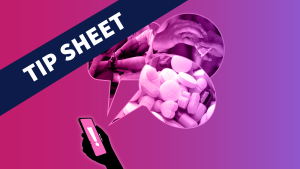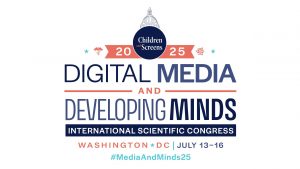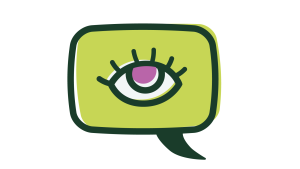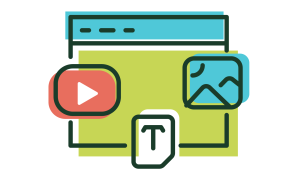
Social media has not only accelerated adolescents’ exposure to adult content but also increased access to recreational, illicit, and potentially deadly drugs. Communities are experiencing overdose deaths from drugs acquired with ease, online, with 25% of teen drug deaths since 2019 attributed to fake pills (Tanz et al., 2022). How are youth finding information and purchasing drugs via social media, and what are the impacts? What can parents and policymakers do to protect children from harm?
Children and Screens brought clinicians, public health experts, drug intelligence officers, and child safety advocates together to provide guidance for parents about the extent of youth drug access and trafficking to minors online.
On This Page
Drugs Online Are Not New – But It Is Getting Worse
Though the opioid/fentanyl crisis has brought the problem to a critical point in recent years, the problem of youth access to drugs online is not a new issue, says Tim Mackey, Professor of Global Health in the Global Health Program at UC San Diego. “It’s been going on for more than two decades,” he says.
However, as the internet has matured, “we have many more platforms, we have much more usage, and we have a much more diverse landscape of the Internet” he says. “Children and youth are at much higher risk for digital exposure to substance use disorder content and also to illicit drug sales. This is a whole ecosystem – there are drug sellers pretty much all over the Internet in all different places. And the Internet interconnects these different sources in different ways.”
Consequences Of Experimentation Are Becoming More Deadly
Parents across the country such as Samuel Chapman, whose son died from a drug overdose from fentanyl-laced Xanax in 2021, have had the horrifying and tragic experience of discovering their children had died in seemingly safe spaces in their own homes and bedrooms due to consumption of drugs acquired via social media and in some cases delivered directly to the home.
Fake pills – pills that contain fentanyl or other illicit drugs other than the advertised content – are increasing and “a major problem throughout the United States,” according to New England drug intelligence officer Robert Lawlor. Lawlor says that 25% of teen drug deaths since 2019 are now attributed to fake pills. “They’re mostly fentanyl,” says Lawlor. “We know from the DEA [Drug Enforcement Agency] reporting that seven out of every ten pills have a deadly dose. These are really dangerous substances.”
How can someone identify a fake pill? Lawlor cautions that bright colors can serve as an indicator that it’s a fake pill.
Protections On Social Media Platforms Are Often Weak
Though many social platforms claim to protect minor accounts, tests from industry watchdogs reveal a different story. “Instagram pledges to make all under 16 accounts private by default,” says Lawlor. “However, the Tech Transparency Project found that a lot of the under 16 accounts created through the Instagram website were public by default, which means your 14, 15, 16 year-olds’ Instagram account is public, open and for anybody to see.”
Lawlor notes that though Instagram has banned some drug-related hashtags like “#MDMA” for the party drug Ecstasy, “If teens search for MDMA, Instagram will autofill alternative hashtags for the same drug into the search bar and bring the children right to these videos and these Instagram stories,” effectively steering them directly to drug content.
Parent activist Chapman says “the drug dealers go on to Snapchat, which is the dark Web for children now. They pretend to be 15 or 14 years old and they network inside of a school, some place where they think the kids will have money. My son was presented with a drug menu with colorful emojis and different prices and told he could get it for free if he helped the guy network and adjust his menu.”
Sidebar: What is the “dark web?” The dark web is a set of web pages on the World Wide Web that cannot be indexed by search engines, are not viewable in a standard Web browser, require specific means (such as specialized software or network configuration) in order to access, and use encryption to provide anonymity and privacy for users. (Source: Merriam-Webster)
Most Free Content Is Not Well Moderated
Social media platforms must review sponsored/paid ads and content because they are directly making money from it, says Mackey, who cites a settlement against Google about ten years ago for $500 million for facilitating illicit sales of drugs through ads. However, when it comes to user-generated content, the controls are much less robust. Platforms “have their own community guidelines and almost all platforms say that you’re not supposed to sell drugs online. The problem is implementing that, carrying it out evenly and putting the resources behind it,” says Mackey.
Algorithms Increase The Flow Of Drug Content To Children
The evolution of social media platforms’ powerful algorithms make it more and more difficult for adolescents to avoid illicit content – even if that’s not what they were originally searching for. Drug intelligence officer Robert Lawlor says unequivocally that “social media algorithms send drug content to your kids.” Lawlor cites a 2021 Wall Street Journal investigation where reporters created several fake accounts of children who were supposed to be 13 to 15 year-olds on Twitter. One account received recommendations for over 569 videos of drug use including cocaine and methamphetamine. Lawlor also noted that in one test, “when a teen account followed a drug dealer on Instagram, the platform started recommending other accounts selling drugs.”
Coded Communications Evade Surveillance
Emojis are often used to send coded communications about drug purchases. This graphic from the DEA’s “One Pill Can Kill” indicates just some of the emojis that drug dealers and purchasers use to communicate about drug deals on social media.
In addition to emojis, “We see labeling of certain locations, for example, of drug sellers. We see use of different emojis, as we’ve already talked about, but also special characters to try to evade text detection. And we even see the use of QR codes and things like that to build menus of drugs,” says Tim Mackey, Professor of Global Health in the Global Health Program at UC San Diego,
Be Aware Of Tor Clients And The “Dark Web”
Have you overheard your children talking about the “dark web” or using a “Tor client?” If so, “that’s a warning sign that kids might be experimenting” with illicit drug purchases online, says Mackey.
Dark web: The “dark web” is a part of the internet that is not indexed and therefore not searchable by search engines that is often used to sell all types of illicit products, says Mackey. “Because of the way the dark web is set up, which is essentially rerouting web addresses over and over, it’s really hard to pinpoint where these different sources of selling are,” he says. “Essentially all you need is a Tor client and a computer to log on to the dark web.”
Tor Client: “Tor client is essentially an application that allows you to access the dark web by routing you to Tor servers,” says Mackey. “If you have the address of a dark web marketplace, you can find drugs there.” Mackey wants parents to know that “even a child could easily get on the dark web if they had the right instructions and the right Tor client to do so.”
Talk To Your Kids
It can be difficult to discuss illegal substance use with adolescents but Lawlor strongly suggests talking with kids to alert them of the dangers of drugs found on their feeds. “I think children want parents to discuss these topics with them in a frank and non-alarmist way and just give them the facts. Start talking about the dangers of drugs and slowly work into looking at their social media.”
The crisis with deadly fake pills makes these conversations even more urgent. “Parents should talk to their kids about avoiding all drugs that come from an unknown source, particularly those purchased on social media. This is important to note – any illicit substance may contain a deadly amount of fentanyl,” says Lawlor.
Be Prepared – It Could Save A Life
Many parents of children who have overdosed from social media-acquired drugs were not even aware their children were using drugs. Though to some parents it may seem like overkill, parents of any adolescent should make themselves aware of opioid overdose signs and treatment. “Everybody should know the signs of an opioid overdose and everybody should have naloxone within two or three steps of where they are at all times,” says Lawlor. “This is really life saving advice, and it’s really one of the only ways we have to really combat this epidemic.”
Parent activist Chapman notes that Narcan is now available without a prescription and also urges parents to have it available at all times.
What Is The Sign Of An Opioid Overdose?
Pediatrician and professor of medicine Colleen Kraft, MD, MBA, FAAP of the Children’s Hospital of Los Angeles says “the biggest sign is lethargy. What happens is their pupils become pinpoint. They start breathing much more slowly and then stop breathing. Sometimes they’ll vomit.” Chapman says “with fentanyl their respiration slows until they eventually pass out and in many cases vomit – death can come from a lack of oxygen or from aspirating what’s in their stomach.”
How Is Narcan Used With An Overdose?
“Narcan is a nasal spray,” says Dr. Kraft. “It’s something very easy to give – you just squirt in there like you would saline or anything else like that.”
Dr. Kraft notes that after an initial dose in each nostril, “you may find that your child would revive and come to and then start drifting off again. That is a sign that they’ve got a lot of opioid in their system and you need to do another dose of Narcan.” Chapman agrees. ”Another dose may be needed before the ambulance shows up. It can look like they come out of it and then they drift back into the opioid poisoning. Having two doses of Narcan on hand is my recommendation.”
Legislative Protection Is Weak – But There Are Possibilities
Parents hoping for legislative solutions to the problem may be disappointed as regulating drug trafficking on the internet has some challenges. “There’s something called Section 230 of the Internet Decency Act, which treats online platforms like the telephone,” says Chapman. Much like the telephone company cannot be sued for a conversation a criminal has with another; internet service providers cannot be sued under this act for drugs that get dealt utilizing their networks. “We need that repealed,” he says. “The fact that they can’t be sued under the Internet Decency Act, Section 230, is what gives them the ability to act with impunity and gross negligence. I mean, they [platforms] have the technical ability to shut this down right now. Every drug dealer could be kicked off the platform and then kicked off the platform again if they found their way back on.”
Mackey notes “there are a number of pieces of legislation that are under consideration right now in addition to what we have on the books already, which includes the Ryan Haight Online Pharmacy Consumer Protection Act, that makes it explicitly illegal to sell drugs online. New legislation includes things like making sure that there’s transparency to data, and transparency could potentially lead to more accountability for the platforms if they’re forced to talk about the data that they are seeing, what they’re doing about it, and sharing it with others for future research that could lead to greater accountability.”
However, Mackey also suggests that new pieces of legislation under consideration could “better establish real policies that have strength and teeth to them and look at what the actual enforcement looks like, and also better enable these platforms to cooperate with law enforcement or force them to do so.”




